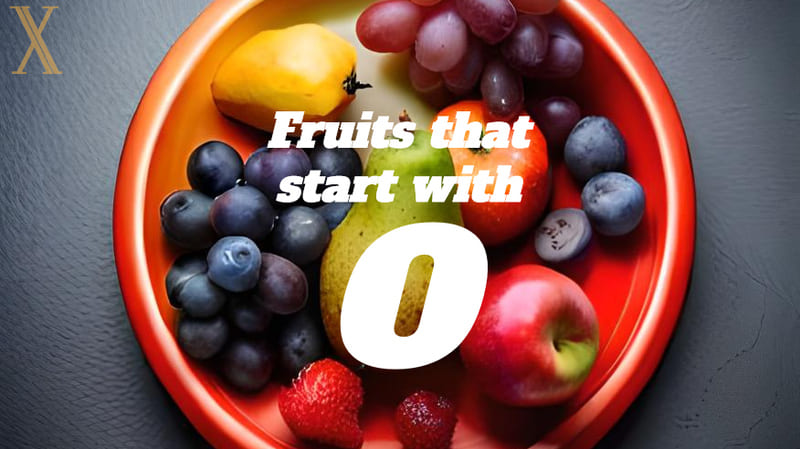
Numerous fruit varieties exist worldwide, but some remain relatively unknown to most people. Fruits that start with I are one example, with several lesser-known yet highly nutritious medicinal options available. From the psychoactive properties of the Iboga fruit to the superfood status of the Illawarra Plum, each of these fruits offers unique flavors and health benefits. In this article, we’ll explore some of the most exciting fruits that start with I and discover their cultural significance, nutritional value, and medicinal uses.
Iboga
Iboga is a small, shrubby tree native to Central Africa that produces a fruit with powerful psychoactive properties. The fruit, which is similar in appearance to a small grapefruit, contains the psychoactive alkaloid ibogaine. Ibogaine is known for its ability to produce intense visionary and spiritual experiences, so it is used in traditional African spiritual practices as a tool for healing, divination, and initiation. In recent years, ibogaine has gained attention as a potential treatment for addiction, particularly to opioids and other drugs of abuse.
Icacina
Icacina is a genus of small trees and shrubs found throughout tropical Africa. The fruit of the Icacina plant is a small, round berry rich in nutrients, particularly protein and iron. The fruit is traditionally used as a food source by many African indigenous groups. It is often eaten raw or cooked into a porridge or soup. In addition to its nutritional value, Icacina has also been shown to have medicinal properties, with extracts from the plant exhibiting anti-inflammatory, antioxidant, and antimicrobial activity.
Icaco
Icaco, also known as Chrysobalanus icaco or cocoplum, is a small shrub or tree native to the coastal regions of the Americas. The fruit is a small drupe resembling a peach, with an outer layer varying in color from pale ivory to purplish magenta and white, cottony flesh. Its flavor is very gentle, primarily utilized for creating syrup in Venezuela’s Zulia state, referred to as “dulce de icaco”, and in various regions of Colombia. It is often planted to stabilize beach edges and prevent erosion.
Ice Apple
Borassus flabellifer, commonly known as doub palm, palmyra palm, tala or tal palm, toddy palm, wine palm, or ice apple, is a fruit that is native to tropical regions of Southeast Asia. A type of palm tree produces fruit and consists of a jelly-like substance rich in electrolytes and minerals. The fruit is typically eaten fresh and is a popular ingredient in various drinks and desserts. In addition to its culinary uses, ice apple is also used in traditional medicine to treat multiple conditions, including dehydration, fever, and respiratory problems.
Ice Cream Bean
Inga edulis, ice cream bean or guama, is a fruit tree native to South America. The fruit of the Ice cream bean tree is a long, flat pod that contains a sweet, cottony pulp. The pulp is often used as a natural sweetener in various foods and drinks and has a flavor often compared to vanilla ice cream. In addition to their culinary uses, Ice cream bean has been used in traditional medicine for various ailments, including diarrhea, arthritis, and rheumatism.
Ichang Papeda
Citrus cavaleriei, also known as Ichang papeda, is a citrus fruit that originated in China. The fruit is small and round, with thick, bumpy skin that ranges from green to yellow. The fruit’s flesh is yellow and highly sour, with a bitter aftertaste. Ichang Lemon is rarely eaten raw but is often used in cooking, particularly in Asian cuisine. The fruit is high in vitamin C and antioxidants, and its essential oil is often used in aromatherapy.
Ilama
Ilama is a tropical fruit that is native to Central America and Mexico. The fruit is similar in appearance to papaya, with a green, smooth skin that turns yellow when ripe. The fruit’s flesh is soft and creamy, with a sweet and tangy flavor often compared to a combination of banana, pineapple, and strawberry. Ilama is high in vitamin C, fiber, and antioxidants, making it a healthy addition to any diet. The fruit is often eaten independently but can also be used in smoothies and other desserts. Ilama is also used for medicinal purposes in traditional medicine.
Illawarra Plum
The Illawarra Plum is a small, dark purple fruit native to the subtropical regions of Australia. It is a rich vitamin C source and has traditionally been used by Indigenous Australians for medicinal purposes. The fruit has a tart and slightly sweet flavor, and the flesh is somewhat gritty, with a large seed in the center. The Illawarra Plum can be eaten raw or cooked and is often used in jams, jellies, and sauces. Due to its unique flavor and health benefits, the Illawarra Plum has recently gained popularity as a superfood.
Imbe
Garcinia livingstonei (African mangosteen, lowveld mangosteen, Livingstone’s garcinia, or imbe) is a fruit native to sub-Saharan Africa. It is a small, round fruit that grows on a tree and has a bright yellow-orange skin. The flesh of the Imbe is similar to that of a mango, with a sweet and tangy taste. The fruit is highly nutritious and is a good source of Vitamin C, fiber, and antioxidants. It is commonly used to make jams, jellies, and sauces and can also be eaten fresh or dried. Imbe has been traditionally used in African medicine to treat various ailments, including diarrhea and skin infections.
Imbu
Spondias tuberosa, commonly known as imbu, is a fruit native to South America, particularly Brazil. It is a small, round fruit that is similar in appearance to a cherry or a plum, with a greenish-yellow skin and a large pit in the center. The flesh of the Imbu is soft and juicy, with a slightly sweet and tangy flavor. The fruit is highly nutritious and is a good source of Vitamin C, fiber, and antioxidants. It is commonly used to make juices, jams, and desserts and is eaten fresh. Imbu is an essential fruit in Brazilian culture and is often associated with the Amazon Rainforest.
Incaberry
Incaberry, also known as physalis peruviana, is a small yellow fruit native to South America. It is commonly grown in Colombia, Ecuador, and Peru. The fruit is about the size of a marble and has a sweet and tangy taste. It is often used in desserts, jams, and sauces. The Incaberry is also known for its high nutritional value. It is a good source of vitamins A, C, and B12 and minerals such as iron and potassium.
Indian Almond
Terminalia catappa, also known as country almond, Indian almond, Malabar almond, sea almond, tropical almond, beach almond, and false kamani, is a large tree native to Asia and Africa. The fruit of the Indian Almond is a small nut enclosed in a hard shell, surrounded by a fleshy covering resembling a small fruit. The fruit tastes slightly acidic and is often used in desserts and snacks. The Indian Almond is also known for its medicinal properties, as the bark and leaves of the tree are used to treat various ailments such as diarrhea, coughs, and skin diseases.
Indian Banyan
The banyan tree, also known as Ficus benghalensis or Indian banyan, is a fast-growing evergreen tree found in monsoons and rainforests in the Indian subcontinent. It can withstand mild frost and drought and grow up to 30 meters tall. Moreover, birds often consume the figs the tree produces, which helps with germination and growth. Therefore, this tree is held in high regard in India and is even considered the country’s national tree.
Indian Fig Opuntia
Indian Fig, also known as prickly pear, is a fruit that is native to Mexico but is now grown in many parts of the world, including India. The fruit is about the size of a small pear and has thick, prickly skin. The flesh of the fruit is sweet and has a slightly tart taste. The Indian Fig is often used in jams, desserts, and drinks. The fruit is also known for its medicinal properties, as it is a good source of vitamins A and C and minerals such as calcium and potassium. As a result, the fruit is often used to treat various ailments, such as constipation and high cholesterol.
Indian Gooseberry
Indian Gooseberry, also known as Amla, is a small, round-shaped fruit native to India, Pakistan, and Sri Lanka. The fruit is greenish-yellow in color and has a sour, bitter taste. It is highly nutritious and rich in Vitamin C, antioxidants, and other essential nutrients. Indian Gooseberry is widely used in traditional Ayurvedic medicine for its various health benefits, including improving digestion, boosting immunity, and promoting hair growth. The fruit can be raw, dried, or cooked into different dishes, including chutneys, pickles, and jams.
Indian Jujube
Indian Jujube, or Ber or Chinese date, is a small, round-shaped fruit native to South Asia. The fruit is reddish-brown with a sweet and tangy taste. It is rich in antioxidants, vitamins, and minerals, making it a healthy addition to one’s diet. Indian Jujube is widely used in traditional Ayurvedic medicine for its various health benefits, including improving digestion, boosting immunity, and promoting healthy skin. You can consume fresh or dried fruit, and it can be used in multiple dishes, including desserts, jams, and chutneys.
Indian Mulberry
Morinda citrifolia, also known as Indian Mulberry or Noni, is a small, round-shaped fruit native to Southeast Asia and Australasia. The fruit is greenish-yellow in color and has a strong, pungent smell. Indian Mulberry is rich in antioxidants, vitamins, and minerals, making it a healthy addition to one’s diet. The fruit is commonly used in traditional medicine for its various health benefits, including reducing inflammation, boosting immunity, and improving digestion. Indian Mulberry can be consumed fresh or used in multiple dishes, including juices, smoothies, and sauces.
Indian Persimmon
Indian Persimmon, also known as Diospyros malabarica or Gaub, is a small to medium-sized fruit native to India. It is an essential fruit in Ayurvedic medicine and is used to treat a wide range of ailments. The fruit is round and has thin, smooth skin, usually yellow or orange. The flesh is sweet and juicy, containing one to four seeds. Indian Persimmons are commonly eaten fresh or dried and used to make jams and jellies. In addition to being delicious, the fruit is also packed with nutrients. It is a good source of vitamins A, C, and E and minerals such as potassium, iron, and calcium. The high antioxidant content of the fruit makes it an excellent food for promoting overall health and well-being.
Indian Prune
Flacourtia rukam is a tree-like flowering plant with a maximum height of 15 meters, originating from Southeast Asia and Melanesia. However, it has spread to other regions, such as Mainland Southeast Asia, India, and Polynesia. Its thorny trunk is distinctive, although some cultivated varieties are thornless. Besides being grown for its edible fruit, colored green, red, or purple and about 2 centimeters long, it has gained popularity in various regions.
Indian Sherbet Berry
Indian Sherbet Berry, or Phalsa or Grewia asiatica, is a small, dark purple fruit native to India and Southeast Asia. The fruit is round and has a thin, slightly fuzzy skin that is easily peeled away to reveal a juicy, translucent pulp. Indian Sherbet Berries are commonly eaten fresh but can also be used to make drinks, syrups, and desserts. This fruit is a rich source of antioxidants, vitamins, and minerals. As a result, it is believed to have a wide range of health benefits. It is particularly effective at reducing inflammation and improving digestive health. The fruit is also known for its cooling properties, which makes it a popular choice for refreshing summer drinks.
Indonesian Lime
Citrus hystrix, also known as the Kaffir lime or Makrut lime, is a small, green, and wrinkled fruit native to Southeast Asia. It is widely used in Indonesian, Thai, and other Southeast Asian cuisines, as the juice and zest of the fruit are known for their distinctive flavor and aroma. The fruit is also used in traditional medicine and aromatherapy due to its antibacterial and antifungal properties. The leaves of the Indonesian lime tree are also used in cooking, and their fragrance is believed to repel insects.
Inga Fruit
It is another name for the Ice Cream Bean. See Above.
-

The A-List of Fruits: A Journey Through Fruits that Start with A
-

Fruits that Start with B: A Guide to the Best of the Bunch
-

Discover the Sweet World of Fruits That Start with C
-

Fruits That Start with D: Discovering Exotic Flavors
-

15 Fruits That Start With E: A Delicious Guide
-

23 Fruits that Start with F: A Guide to Nutritious Options
-

Fruit Alphabet: Discovering Fruits that Start with G
-

Fruits that start with H: From Habanero Pepper to …
-

22 Fruits That Start With I: Nutritious and Medicinal Treasures
-

25+ Fruits that Start with J: A comprehensive list
-

35+ Fruits that Start With K (with a short description)
-

Fruits that Start with L: From Lablab to Lychee
-

The Mighty M’s: A Guide to Fruits That Start with M
-

Fruitful N: Discovering Exotic Fruits That Start With N
-

The Encyclopedia for the Fruits That Start with O
